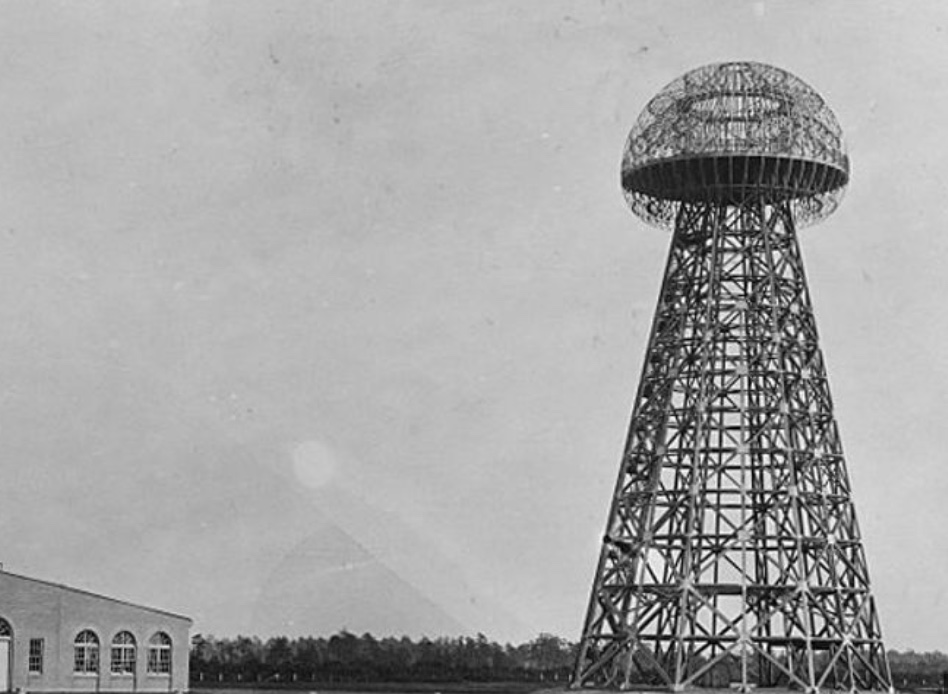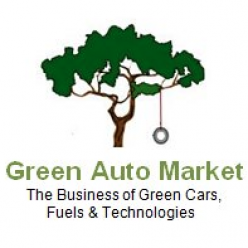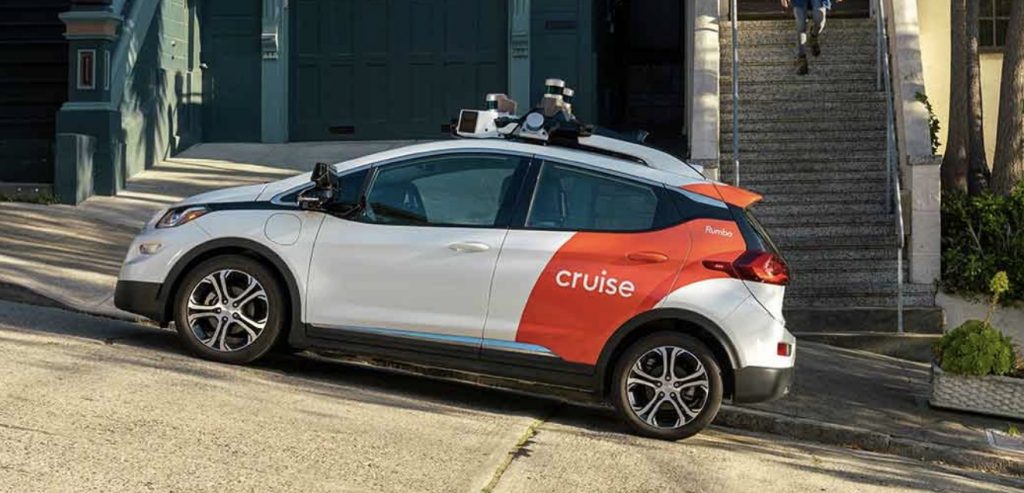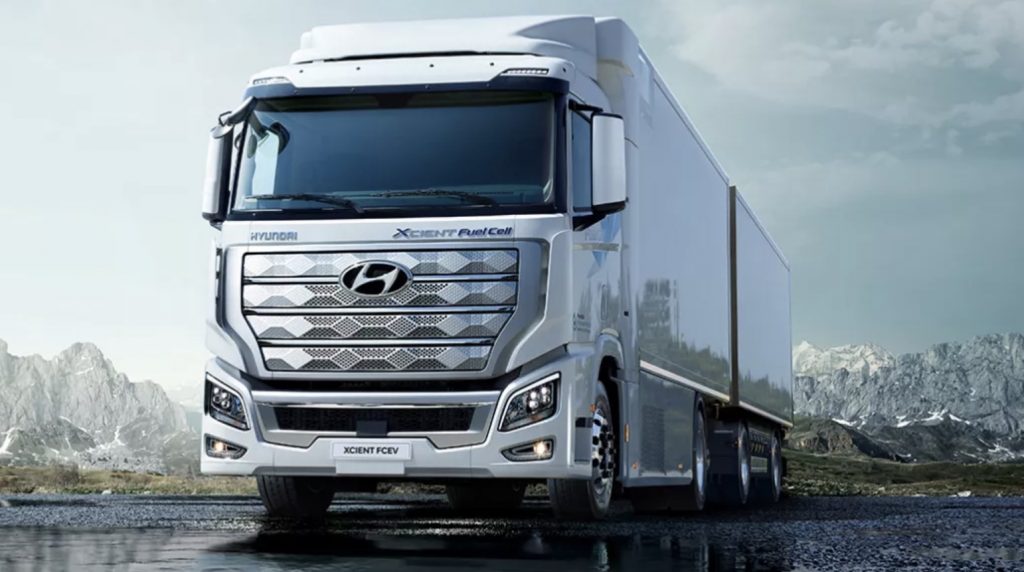
Did electric engineer and inventor Nikola Tesla lose his mind at the Wardenclyffe Tower in Long Island, NY, while striving to demonstrate that long-range wireless electricity transmission could be possible? While Tesla did live with mental health issues tied to obsessive-compulsive disorder, he didn’t seem to be wrong about wireless power transmission.
His main problem was that investor J.P. Morgan stopped funding the “Tesla Tower” experiments, and the project had to be shut down in 1906. The tower was later demolished in 1917. The ending of the test project happened about five years into developing the revolutionary technology — that would have freed up countries around the world from having to lay down the costly and laborious electric power grids on land with wired power stations, substations, and endless utility poles. Tesla discovered magnetic resonant coupling – the ability to wirelessly transmit electricity by creating a magnetic field between two circuits, a transmitter and a receiver.
While it’s yet to be taken as seriously as the current electric vehicle charging infrastructure that’s rolling out, the dream of seeing wireless electric vehicle (EV) charging hasn’t gone away. It is seeing something of an uptick lately. These days, inductive (wireless) charging has become the norm for everything from smartphones and laptops to kitchen appliances. Why not EVs?
Experts say it has great potential to make EV ownership more convenient, cost-effective, and appealing for drivers and fleet operators. There are multiple technologies in the works that could free EV drivers from the inconvenience of manually plugging in with a cable. National Renewable Energy Laboratory (NREL) continues to research the requirements and feasibility of wireless electric vehicle charging. Roadway classes to be electrified, and roadway charging segment locations and lengths, are part of the study.
Here’s more on some of the players in the game………
WiTriCity
Headquartered in Watertown, Mass., WiTricity Corp. is considered to be the largest supplier and service provider in this space. The company specializes in wireless electricity, wireless power transfer, wireless charging, magnetic resonance, and charging electric vehicles. The company serves the automotive, consumer electronics, industrial, and medical industries in the US, Europe, China, Japan, and South Korea. The company came from the merger of Qualcomm and HaloIPT, a leading provider of wireless technology for electric road vehicles. The team was moved over to Qualcomm’s European Innovation Development group based in the UK. In 2019, Qualcomm sold off Halo’s technology to MIT spinoff WiTriCity for a minority stake in the company. The company has developed the WiTricity Halo™ Receiver, which is placed in electric vehicles and which captures energy from the magnetic field produced by the charger and converts the energy to direct current for charging its battery. The company has been talking to luxury carmakers (Genesis being one of them) about making this service a perk for luxury EV owners.
InductEV
Formerly known as Momentum Dynamics, the King of Prussia, Penn.-based company serves fleets in commercial, transit, and intermodal vehicles. It’s considered to be a leading company in high-power, wireless EV charging. With nearly 50 patents issued and in process, InductEV’s solution lowers owners’ and operators’ total carbon footprint by minimizing dependencies on people and real estate while also maximizing vehicle uptime due to on-route charging, resulting in a reduction in the total cost of commercial fleet ownership. The company is led by founder Andrew Daga, whose time at NASA and working on inductive charging for the International Space Station inspired the company.
Its pilot project in Oslo, Norway, made electric taxis there operate more efficiently — in an automotive market where nearly two-thirds of new passenger vehicles sold there in 2021 were electric.
Plugless Power
The company has delivered over one million wireless charging hours for EVs with EV drivers. It has installed wireless charging stations at Google’s office in California and Hertz’s office in Florida. The company describes itself as “the world’s first hands-free proximity charging system for electric vehicles.” Its charging system wirelessly delivers electrical power to the on-board EV battery charger using electromagnetic induction without a physical connection (cable) to the vehicle. An EV equipped with a Plugless Vehicle Adapter can be charged by parking it over an inductive Plugless Parking Pad. In 2020, the company acquired the wireless inductive charging patent portfolio, and other related intellectual property, of Evatran Group, Inc. Trial partners have included Duke Energy and Oak Ridge National Laboratory, along with Google. In 2016, the more powerful second generation Plugless Power wireless charging system was released, supporting the Tesla Model S and BMW i3. The third generation version came out in 2021.
WAVE
WAVE is considered to be a leading provider of wireless charging solutions for medium and heavy-duty electric vehicles. Embedded in roadways and charging vehicles during scheduled stops, the fully automated, hands-free WAVE system eliminates battery range limitations and enables fleets to achieve driving ranges that match that of internal combustion engines, the company says. Based in Salt Lake City and founded in 2011, the company was later acquired by Ideanomics for $50 million in 2021. More recently, the company has been focused on what it calls “opportunity charging,” an innovative charging method that facilitates the recharging of EVs during regular operational activities where downtime already exists in duty cycles, including layovers for transit buses and lunch breaks for cargo handling equipment. This approach differs from traditional plug-in depot charging, where vehicles are required to return to a central charging station, the company said.
Other companies in this space include:
—Tesla just acquired German startup Wiferion, and while the electric automaker didn’t report on the acquisition cost its second-quarter cash flow statements noted that $76 million was spent on “business combinations.” Wiferion focuses on the performance of industrial electric vehicles such as autonomous guided vehicles (AGV), autonomous mobile robots (AMR), forklifts, and collaborative robots (CoBots) – with inductive charging systems that revolutionize the intra-logistical workflows.
—EFI Automotive, a Stellantis partner, has developed an inductive robot charger that moves under a vehicle after it’s parked, reports Automotive News.. The automaker announced it at CES in January tied to its Ram 1500 Revolution pickup truck. EFI said the device is able to charge both light-duty and commercial vehicles.
—Ford was granted a patent this year that brings together coils connected to an electricity source and embedded in the road surface with an electric vehicle capable of wirelessly receiving the power transmission, InsideEVs reports. ‘Ground penetrating radar (preferably Ultra-Wideband or UWB radar) detects and maps out the embedded charging coils so that a vehicle path can be laid out with the optimal charging capacity. A detection range of the radar extends beyond the charging coil presently beneath a vehicle, potentially beyond the next few coils in the travel direction of the vehicle,” according to the patent filing.
—Toyota was awarded a patent in 2022 for what it calls “Optimizing Energy Transfer During EV Charging.” That would apply to developing systems that can optimize the amount of energy transferred from multiple sources along a travel route to individual EVs. It will use a blockchain technique to efficiently use the energy sources.
—Electreon, based in Beit Yanai, Israel, has developed smart road technology using a dynamic wireless electric system for the electrification of transportation. The firm uses wireless electric system technology to reduce the need for heavy batteries. It focuses on smart road technology, wireless energy, public transportation, electric vehicles, E- mobility, and autonomous vehicles.
—Founded in 2011 and based in Brooklyn, N.Y., HEVO Inc., offers wireless charging solutions for electric vehicles, focusing on providing users with advanced charging technologies.The company’s wireless charging solution consists of three components: App & Cloud Sync, Power Station, and Wireless Receiver. The HEVO app shows nearby charging stations, monitors and evaluates charging statistics and bill payment status, and indicates charging stations’ availability. With its subsidiaries and distribution network, the company has a presence across North America and Europe, with offices in Brooklyn, Amsterdam, and Silicon Valley.
—Hyundai’s Genesis luxury division is involved in a wireless charging pilot project in South Korea. WiTricity’s magnetic resonance wireless charging technology was tried out in the first half of this year through a fleet of Genesis GV60 and electrified GV70 luxury sport utility vehicles. Genesis said that 23 wireless charging pads were placed around the country with a power control station and a base pad placed on the ground. The company said that its wireless charger has an output of 11kW.
—German alternative energy company, Neutrino Energy, is investing 2.5 billion euros in India for developing a self-charging electric car, the Pi Car project. It will be using Neutrino’s patented neutrino voltaic technology. The German company says that neutrino voltaic would have applications across industries and products which involve storing and consuming electricity. The company says that its neutrino voltaic technology derives electrical energy from neutrinos, which are invisible particles that bombard the Earth in roughly equal numbers every moment of every day.
—Other major international suppliers have been involved in supplying parts of the wireless EV charging technology for several years — Continental AG, Toshiba, Daihen, and Lumen.
And in other news…….
San Francisco struggling with robotaxis: While the Public Utilities Commission granted San Francisco the right to allow robotaxis without human drivers on its streets on August 10, it’s been a tumultuous situation ever since. General Motors’ Cruise division has agreed to cut its fleet of robotaxis in half after a recent crash in the city. That request had come from the California Department of Motor Vehicles after one of its robotaxis collided with an emergency vehicle on Thursday. The passenger in the robotaxi was taken by ambulance to a hospital to treat injuries that were not severe, Cruise said. A series of other safety and traffic-congestion incidents with Cruise and Waymo robotaxis, and objections expressed over whether they should be allowed to operate in the city, prompted the San Francisco City Attorney to urge state regulators to reconsider allowing autonomous vehicles to operate in the city.
CALSTART has released its Phasing in U.S. Charging Infrastructure report, which is aimed at building an infrastructure for rapid zero-emission (ZE) medium- and heavy-duty vehicle (ZE MHDV) adoption in the commercial transportation industry. In this roadmap, infrastructure buildout meets the pace and volume of ZE-MHDV market growth set by the Global Memorandum of Understanding on Zero-Emission Mediumand Heavy-Duty Vehicles (Global MOU), which the U.S. signed in 2022. The Global MOU, co-led by the Government of The Netherlands and CALSTART’s Global Commercial Vehicle Drive to Zero campaign and program (Drive to Zero), calls for 30 percent new commercial vehicle sales being zero-emission by 2030 and 100 percent being zero-emission by 2040. This adoption rate is 45 percent deeper than the vehicle penetration rates assumed by EPA’s proposed Phase 3 Greenhouse Gas Emissions Standards for HeavyDuty Vehicles. CALSTART representatives, including president and CEO John Boesel and report author Michael Joseph, are available for interviews. Please contact Dirk Evenson (devenson@calstart.org; (619) 908-2903) or Shane Glaseman (sglaseman@calstart.org; (626) 744-5617) to make arrangements.
Hydrogen from methane: Researchers Richard Blair and Laurene Tetard, both professors at the University of Central Florida (UCF), have developed a process that allows methane to be converted into hydrogen and carbon at room temperature using nothing but sunlight. Making hydrogen by reforming methane gas presents much opportunity with the US getting more than 95% of its supply from it, but it also creates enormous carbon emissions in the process. Extracting hydrogen from methane at room temperature using only sunlight would mean no carbon dioxide emissions.


